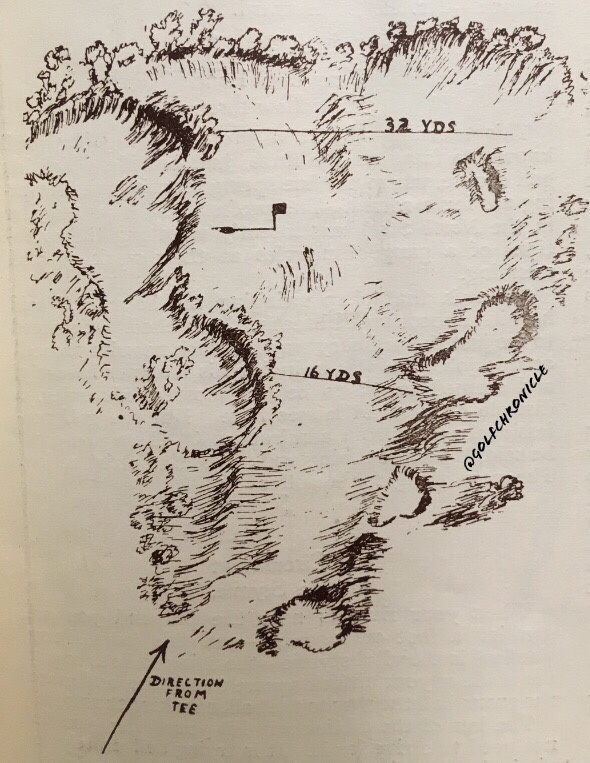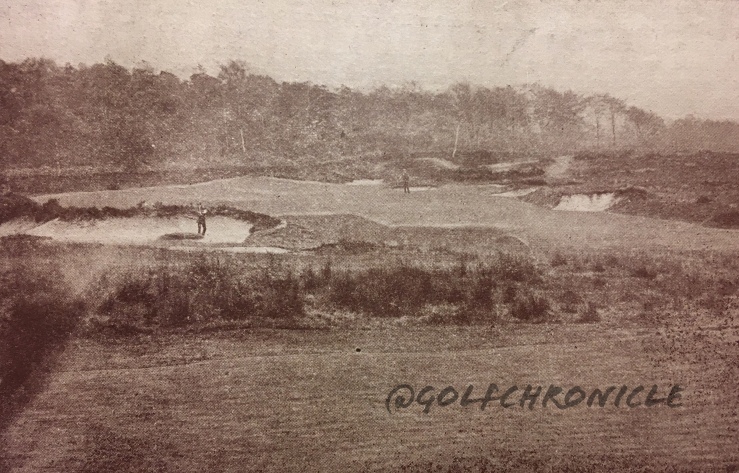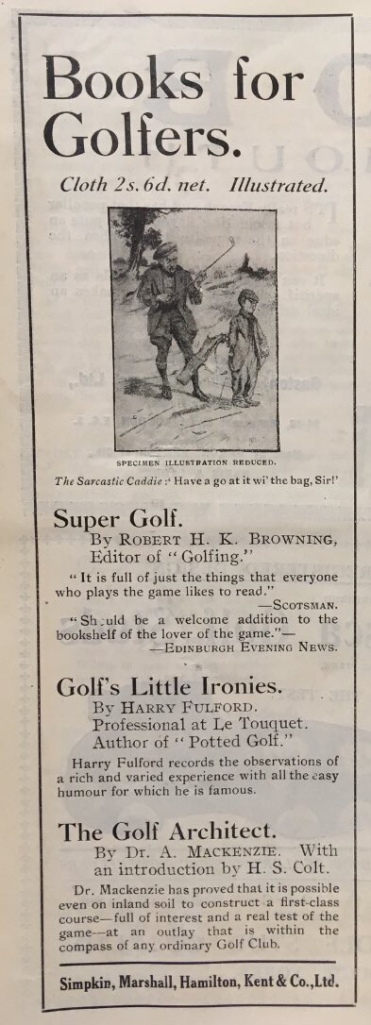
THE first real exposition of the ideas of the modern school of golf course construction has just been published under the title of Golf Architecture in Messrs. Simpkin Hamilton Marshall Kent & Co’s. half-crown series. The writer is Dr. Mackenzie of Leeds, who was one of the country’s camouflage experts during the war, and several of whose articles on course construction have appeared in these pages. The volume before us, which has an introduction by Mr. H. S. Colt, Dr. Mackenzie’s colleague in construction work, collects together all the most modern ideas and methods of construction work in a wonderfully compact and readable form. Much of the book will be quite new even to readers of GOLFING, notably that portion of it which deals with ideal holes, from which we quote the following passages.
The ideal hole is surely one that affords the greatest pleasure to the greatest number, gives the fullest advantage for accurate play, stimulates players to improve their game, and never becomes monotonous.
The real practical test is its popularity. . . .
The difficulties that make a hole really interesting are usually those in which a great advantage can be gained in successfully accomplishing heroic carries over hazards of an impressive appearance, or in taking great risks in placing a shot so as to gain a big advantage for the next. Successfully carrying or skirting a bunker of an alarming or impressive appearance is always a source of satisfaction to the golfer, and yet it is hazards of this description which so often give rise to criticism by the unsuccessful player. At first sight he looks upon it as grossly unfair that, of two shots within a few inches of each other, the one should be hopelessly buried in a bunker and the other should be in an ideal position. However, on further consideration he will realise that, as in dog-leg holes, this is the chief characteristic of all good holes.
Holes of this description not only cater for great judgment, but great skill : a man who has such great confidence that he can place his ball within a few feet of his objective gains a big advantage over a feint-hearted opponent, who dare not take similar risks. On a course with holes of this kind match play becomes of intense interest.
In an ideal long hole, there should not only be a big advantage from successfully negotiating a long carry for the tee shot, but the longer the drive, the greater the advantage should be. A shorter driver should also, by extreme accuracy, be able to gain an advantage over a long hitting, but less accurate opponent.
An ideal hole should provide an infinite variety of shots according to the varying positions of the tee, the situation of the flag, the direction and strength of the wind, etc. It should also at times give full advantage for the voluntary pull or slice ; one of the most finished shots in golf, and one that few champions are able to carry out with any great degree of accuracy.
Should an ideal hole be ideal for the plus, scratch or long-handicap player ? As players of all handicaps play golf, a hole should as far as possible be ideal for all classes. There are many famous holes, such as the Cardinal, which are by no means ideal, as in an ideal hole there should always be an alternative route open to the weaker player.
Among several examples of ideal holes, Dr. Mackenzie gives only one of his own construction–the eighth or “Gibraltar” hole at Moortown, which is 170 yards long, and was constructed at a cost of only £35. The hole is thus described:–

The green has been constructed on a slight slope. The soil has been removed from the lower portion of the slope to make the bunkers and to bank up the green. The natural slope has been retained at the entrance to the green, and, like the eleventh at St. Andrews, it is these subtle slopes which lead a ball which has not been correctly hit into the adjacent bunkers, and in reality have very much the same effect as a cross bunker without the hardship to the long handicap player.
The hole also shares with the eleventh at St. Andrews the necessity for an infinite variety of shots according to varying conditions of wind, position of flag, etc. One day it is a comparatively easy pitch with a mashie, normally it is a straight iron, sometimes a straight shot with a trace of pull is required, and, again, it is necessary to slice so that one’s ball is held up against the slope of the hill.

Part of a series of golf themed budget books (the title was changed to Golf Architecture) this book is now a classic.
April 1920